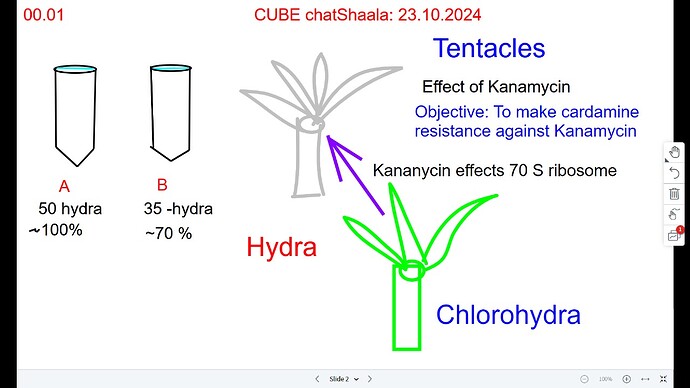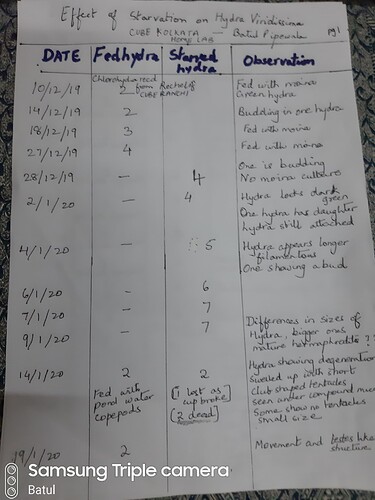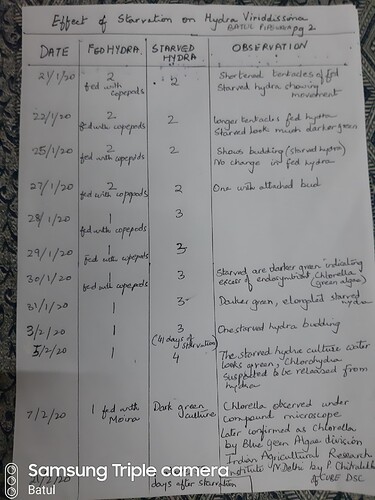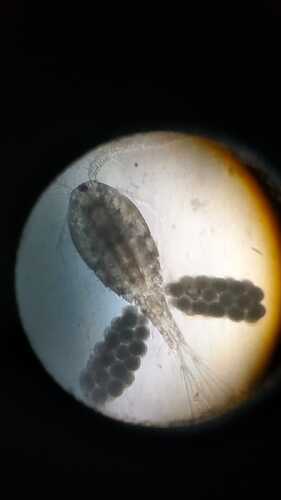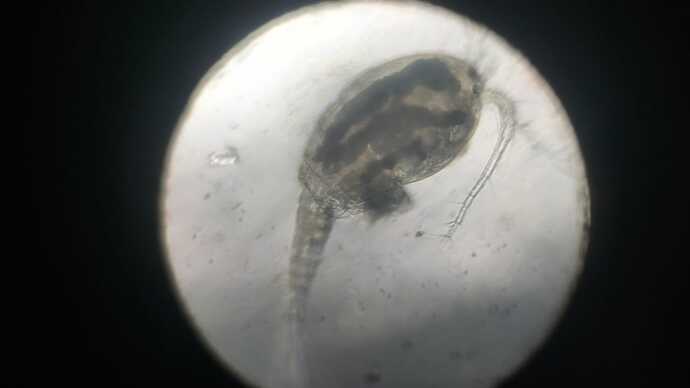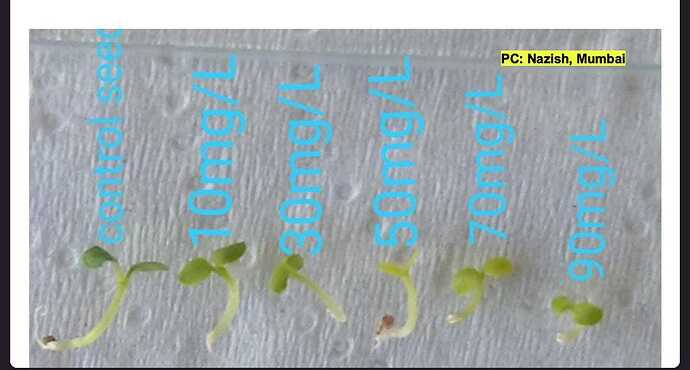Phase 1 discussion:
Chlorohydra and Cardamine
Yesterday, we started the discussion on the current status of chlorohydra, which @KiranKalakotiR received from @sakshiconsultant2002 on 19/10/2024.
Moina were absent in the vials, so Kiran placed the chlorohydra in indirect sunlight near a window.
@magpie shared her experience of once receiving chlorohydra from Ranchi Cubists and the feeding methods she used, both with and without moina.
We discussed alternatives to moina, such as freshwater organisms, including copepods, to feed the chlorohydra.
CUBE Sapekhati observed copepods in the collected water samples.
@2020ugchsncnseethala asked how an animal like hydra could survive without moina for these days. Kiran replied that it is not just hydra, it is chlorohydra, which contains chlorella, a green algae that can do photosynthesis and produce glucose.
Kiran shared a video of chlorohydra, showing a color change from green to white when treated with the antibiotic trimethoprim.
The effects of trimethoprim on protein synthesis were studied by using as an experimental basis the rate of maturation of ribosomal particles from RNA-rich precursors. 1. In RC(str) cultures given nucleotide bases but no amino acids, RNA accumulation was inhibited because of amino acid lack. However, maturation of ribosomes from their precursors was more severely inhibited than was the synthesis of rRNA. https://pubmed.ncbi.nlm.nih.gov/4590199/
We connected this to the effect of kanamycin on Cardamine seedlings.
Effect of kanamycin on germination of cardamine. Increasing conc of kanamycin leads to decrease in plant growth and Chlorophyll development. Most affected: 50mg/litre. Credit: Nazish, Mumbai Maharashtra.
Kanamycin is an antibiotic that affects the 30S subunit of the 70S ribosomes, leading to a color change from green to yellow, with the expectation of further turning white with additional treatment. The chloroplasts of chlorella/Cardamine contain 70S ribosomes, and treatment with antibiotics that affect these ribosomes can cause color changes.
Reference:
In eukaryotes, ribosomes are present in mitochondria (sometimes called mitoribosomes) and in plastids such as chloroplasts (also called plastoribosomes). They also consist of large and small subunits bound together with proteins into one 70S particle.[17] These ribosomes are similar to those of bacteria and these organelles are thought to have originated as symbiotic bacteria.[17] Of the two, chloroplastic ribosomes are closer to bacterial ones than mitochondrial ones are. Many pieces of ribosomal RNA in the mitochondria are shortened, and in the case of 5S rRNA, replaced by other structures in animals and fungi.[29] In particular, Leishmania tarentolae has a minimalized set of mitochondrial rRNA.[30]
Questions addressed:
Will there be a regrowth of chloroplast ribosomes after the treatment period?
[23/10, 9:44 pm] Himanshu Joshi: Aren’t Carotenoids (beta carotene, leutin and zeaxanthin) or Anthocynins become abundant when treated with kanamycin.
In that case why does orange/red or blue/violet colour is not observed?
@Nazish Cube @Theertha @Seethalakhmi @Kiran and others
